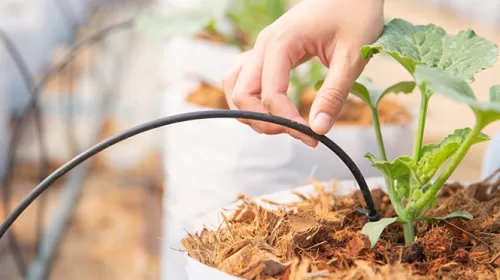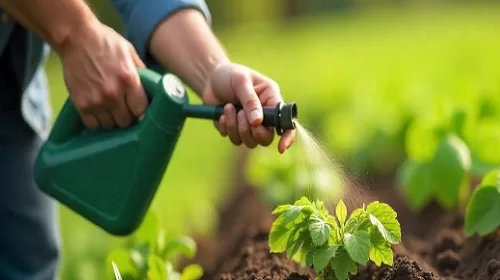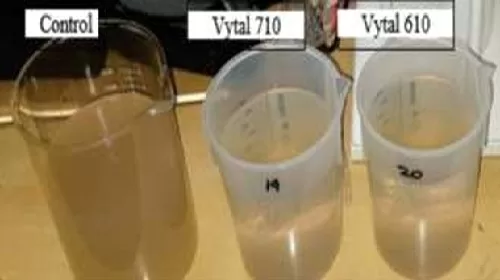By Mohammed Naser Azeez, Managing Director, Aquality Water Solutions Pvt. Ltd
Amongst the five essential elements considered as the basis for life, water is one of them. Life cannot be imagined without water. If there was no water, then the creation of the universe would not have been possible.The importance of it indicates with the historical fact that all great civilizations of the world developed near the water sources and all the ancient cities were located on the banks of rivers.
But today the value of water is again becoming significant as cities around the world experience exploding growth and declining water sources. The need to ensure that they should expand sustainably, operate efficiently and maintain a high quality of life for residents is becoming ever greater than historical times.
Water Scarcity
The water has become scarce – almost 2 billion people (a good 30% of world population) are living in countries or regions with absolute water scarcity. Out of this world total, a major portion of more than 600 million people in India is facing severe water scarcity issues. Big cities around the globe including Indian metropolis – Delhi, Chennai, Hyderabad and Bengaluru have declining water sources and facing the threat of day zero in near future unless drastic measures are taken. A Central Ground Water Board report suggest that as many as 256 of 700 districts have reported ‘critical’ or ‘over-exploited’ groundwater levels and fetching drinking water in these districts has become harder as the water table has sharply declined.
The National Commission for Women studied the plight of women in water scarce areas and reported that at an average they walks over 2.5 kilometres to reach a water source every day. This is probably an underestimation as in Rajasthan; they sometime have to walk for 8-10 kilometers before finding a proper source of water. The bottom-line is that our women and girls spend a significant proportion of their time fetching water for drinking and household chores.
Among India’s major problems is the lack of freshwater sources. The country is having 18% of the world’s total population, but accounts for only 4% of global freshwater resources. But it is among the world’s largest consumer of groundwater consuming 124% more groundwater than China or US.
Infrastructure Conundrum
Even in regions where water is plentiful, water distribution systems are aging, demand is rising and management of this precious resource has become critical. The aging water infrastructure systems have long been an out-of-sight, out-ofmind problem. But water loss from leaking pipes, faulty or no metering and rampant water theft has become a big challenge to address which means huge loss of revenue for utilities and poor services to consumers.
Water utilities are struggling with aged infrastructure and depleting water sources to provide clean drinking water to increasing urban populations and expanding service areas with a high level of water loss. Reducing water losses is critical to efficient resource utilization, capable utility management, enhanced consumer satisfaction, and saving in capitalintensive capacity addition. With trillions of gallons of water required every day to quench the thirst from each habitation, we understand that water is fundamental for sustainable development as it affects health, economy, livelihood, and ecosystem protection.
Water-Energy Connection
India’s thermal power stations which constitutes more than 70% of India’s total electricity generation and 60% of its installed power capacity from coal to natural gas to nuclear plants are highly dependent on freshwater for cooling. A research report finds that growing water scarcity forced 14 of the country’s 20 largest thermal utilities to shut down at least once causing $1.4 billion in revenue losses. Data from Ministry of Power show that between 2017 and 2021, there have been approximately 8.2 terawatt-hours (TWh) in lost energy production due to water shortage alone. That’s enough electricity to power 1.5 million Indian households for five years. In fact, water shortages are the top environmental cause of power plant outages in India and the fifth-largest reason for forced outages overall, following equipment failures, reserve shutdown, fuel outages and uneconomical operations.
A classic example of India’s problematic energywater situation is the city of Chandrapur which is fed by the Erai reservoir. The declining water levels of the reservoir forced the authorities to cut the city’s water supply in half, while Chandrapur Super Thermal Power Station shut down some of its power generation units for up to four months. Power outage due to water-related risks also causes revenue loss and profits for thermal power companies. Between 2013 and 2016, 14 of India’s 20 major thermal utility firms shut down because of water shortages, costing them about INR 91 billion ($1.4 billion) in income. World Resource Institute has calculated that India’s electricity growth between those years would have been 15% higher if the generation units had not shut down due to lack of water.
Water Economy
About 600 million people in India currently face acute water shortages and almost 200,000 lose their lives from lack of access to safe water. More than 12% of the country’s population (approximately 163 million) are facing the threat of “Day Zero” scenario with no access to clean water within or near their homes. The COVID-19 pandemic has exacerbated the water crisis by increasing the demand for domestic water by 20- 25 percent as hygiene awareness has grown. With increasing populations, commercial activities, agricultural requirement combined with growing consumption patterns, water demand is projected to grow at a 2.8% Compounded Annual Growth Rate (CAGR) from 2010 to 2030, facing a supply gap of 50% by 2030. Agriculture would be the worst hit, followed by industries that are heavily dependent on water, such as food processing, beverages, textiles, metals, chemical, paper and leather. In economic terms, water shortage could result in a 6% loss in GDP of the country.
Wastewater as Resource
The potential source of new water is the wastewater. World over, both developed and developing countries are producing new water from their wastewater to cater the growing demand but in India it is highly underutilised. It is estimated that if India treat and reuse 80% of its untreated wastewater from only 110 of its most populous cities where most industrial units are situated, 75% of projected industrial water demand can be met by 2025. The sludge from treated wastewater can as well irrigate about three million hectares of land annually, while providing nutrients to crops and reducing fertiliser dependence by 40%.
The use of treated wastewater for non-potable use like industrial and agriculture saves freshwater for drinking purposes. India generates approximately 71 billion litres of municipal wastewater per day and it is growing continuously. As the load of wastewater increased exponentially, the treatment capacity merely grow from 23 billion litres to 28 billion litres a day, which is far short of the global standard. The existing treatment facilities are a mere 40% of the actual generation but in effect only 33% of India’s urban wastewater is actually treated, and an even smaller portion is being reused.These figures are quite low when viewed against those of comparable countries. For instance, BRICS nations like Brazil and South Africa treat 45-55 percent of their wastewater.
The United Nations Water Report suggests that at least 50 countries worldwide are known to use wastewater for irrigation purposes, accounting for an estimated 10% of all irrigated land in those countries. India which has agriculture sector using over 80% of fresh water for irrigation can become a game changer if treated wastewater is reused to irrigate and produce crops.
International Best Practise
The water demand in Singapore is expected to double in the next four decades, with nondomestic water demand estimated to make up 70% of the overall water use. Singapore is efficiently working towards developing the necessary infrastructure with modern technologies to treat all its wastewater and turn into drinking water. Perth, the Australian city is recycling good amount of city’s 134 billion litres wastewater into drinking water supplies. Israel is using nearly 90% of the country’s treated wastewater for irrigation and other purposes. Florida, USA is at the forefront of US wastewater reuse program making use of twothird of generated wastewater. The city of Orlando has created a 1640 acre wetlands system using reclaimed water from the wastewater treatment facility. In Durban about 98% of the wastewater is recycled and reused by local industries. Beijing is using recycled water in infrastructure development to keep up with an ever-expanding mega city. Bangkok is treating wastewater as a resource and a valuable economic good. Kampala, Uganda is protecting its water source with an integrated plan to control, treat and reuse wastewater. Manila is regenerating resources through wastewater treatment and reuse.
Water & Aquality Solutions
With water scarcity becoming a perennial issue and unclean water costing thousands of lives, Aquality Water Solutions as a conscious decision entered into the business of enabling clean drinking water to people. With advance technology and innovative solutions of water treatment for domestic as well as commercial and industrial, it has helped in providing clean and hygienic drinking water to people and businesses. The ISO 9001:2015 certified company; it uses proprietary technologies to provide custom-designed high quality water treatment solutions to consistently deliver safe drinking water to its diverse clientele that include civilian households to defence establishments, pharmaceuticals, manufacturing, commercial establishments, institutions, technology companies including ultrapure water to industries.
The Way Forward
We need to consider innovation in water sector as Singapore which has been adopting innovative technologies to ensure optimal use of its existing water resources. Almost 55% of the country’s wells have dried up and the level of groundwater has reduced by 54%. Every year due to the rising heat, the problem of drought is expected to become more serious. The ardent need is to expand and maintain a realtime monitoring system for optimisation of water sources, reservoirs and catchment operations and distribution network.The emphasis should be to use technological breakthroughs to deal with the water woes and overcome the challenges of increasing water demand, water loss, rising energy costs and land scarcity. Best practices to be studied and adopted that will include stateof-the-art auditing methods, leak detection monitoring, targeted repairs or upgrades, pressure management and smart metering technologies. Fixing leaks should be a priority as it helps lower energy demand and cut costs by reducing energy needed for water production and distribution as it takes water to generate energy, and energy to generate water services.Our cities can no longer afford to lose billions of litres of treated water to aged and crumbling infrastructure.




